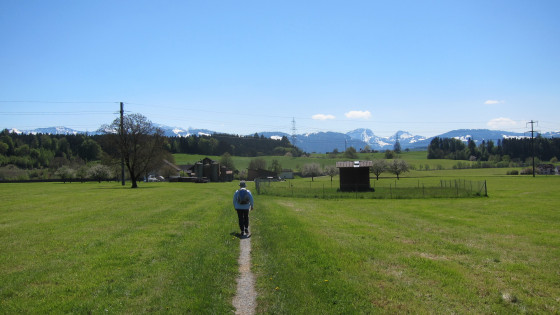
The cover picture was taken from Goldberg.
From Neuhaus the path leads via Goldberg (521m) down to Schmerikon to the shore of Obersee.
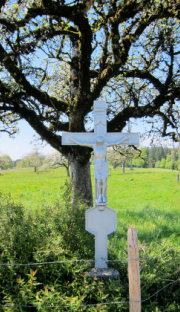

On the Goldberg stands this cross, on the downhill path this fountain.
From the top there is a fantastic view of the lake, Schmerikon and all the way into the canton of Glarus to the 2441 meter high Mürtschenstock.
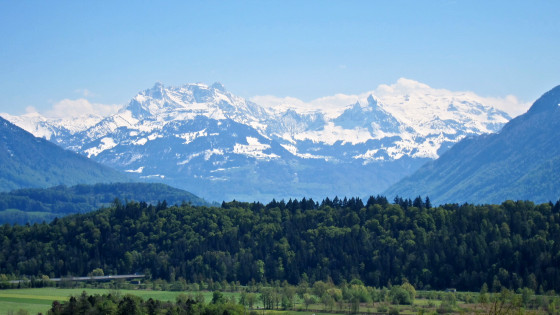
In the center of the picture the Mürtschenstock

A first view of Schmerikon on Lake Zurich
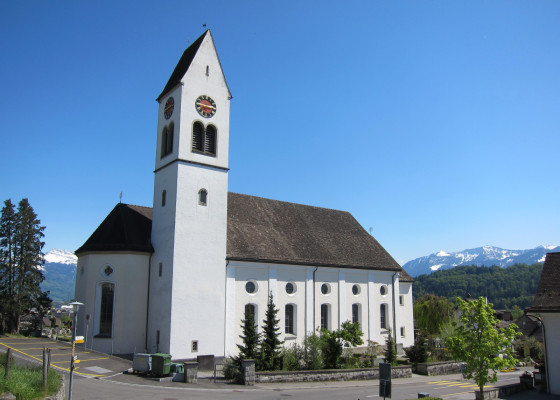
Church St. Jodokus

Schmerikon
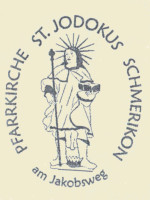
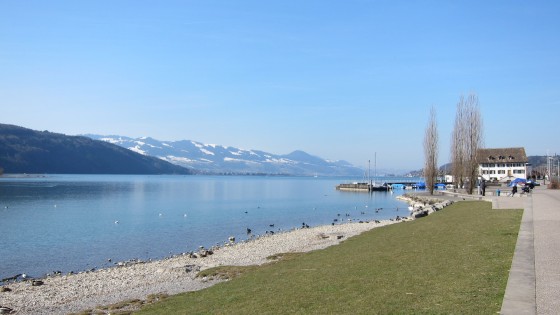
Behind the train station of Schmerikon you reach the lake.

Past the lido we walk along the Aabach to the Aabach bridge from the 19th century and thus reach the Linth canal. We continue on a dam to the Grynau bridge.
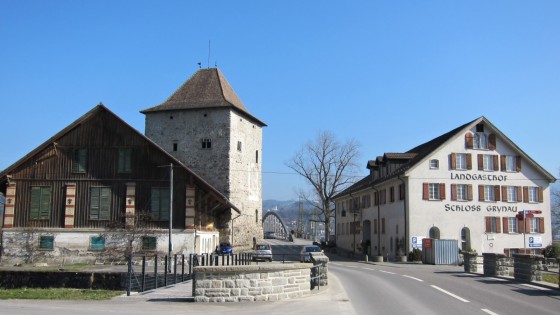
The medieval tower of Grynau Castle was built in the 13th century by the Counts of Rapperswil to secure the crossing over the Linth River.
In the foreground you can see the new pedestrian footbridge (to the left of the road bridge) over the Hintergraben. It was inaugurated in April 2013.
Soon we are at the Linthbord Chapel. The link also leads to the legend of Anneli
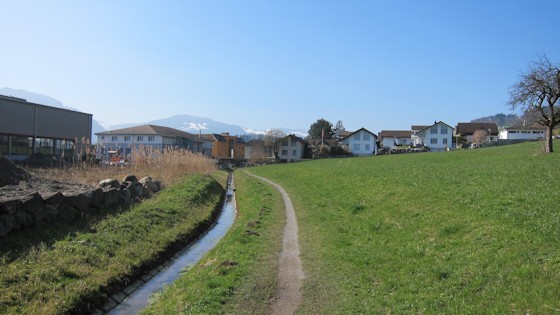
On narrow paths we approach the village of Tuggen. The missionaries Columban and Gallus worked here around 610. They had to flee, however, because Gallus burned down the local pagan temples and threw the offerings into the lake. Today the parish has St. Gallus in its coat of arms. Until about 1550, Lake Tuggen reached directly to the village.

A first Merovingian church stood here already in the 7th century. It was followed by a second church around 1000 in Romanesque style and a third, Gothic church building in the 14th century. The present baroque church of St. Ehrhard and Victor was built in 1733 and 1734.
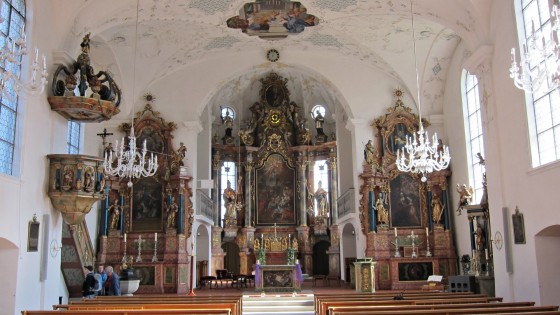
The church of Tuggen was renovated in 1994.
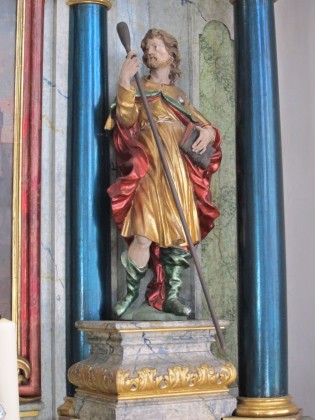

St. James has found his place at the right side Victorian altar.
At the main altar on the top right there is a statue of St. Nepomuk.
Here is a photo of Nepomuk sent to me by the president of the church council of Tuggen after reading this page.
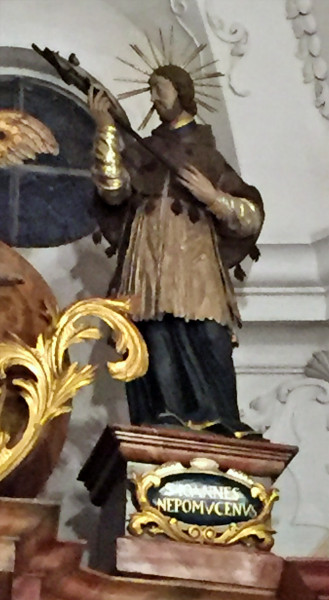
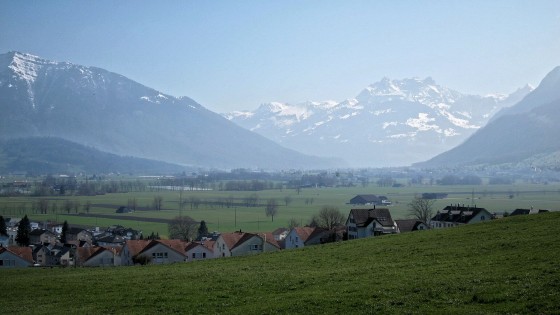
After a short ascent, the view widens to the Glarus Alps. On the far left, the Federispitz. In the middle the Mürtschenstock in Glarus. It is 2441 m high.
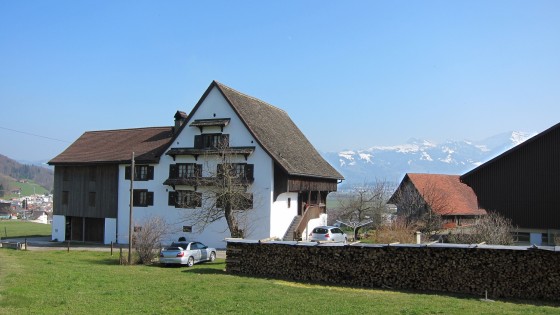
We pass by the Muesli farm.
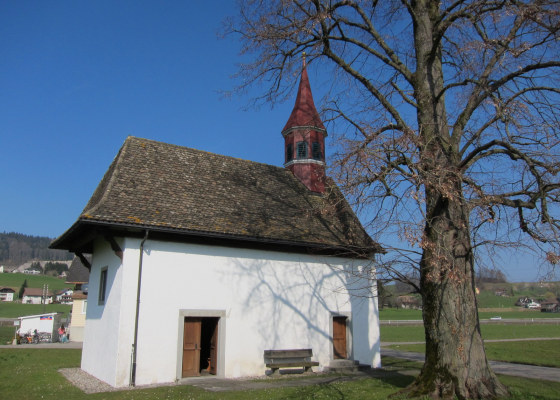
From the slopes of the Buechberg the path leads back down to the plain and we cross the highway.
On the other side is the Loreto Chapel in the Chromen.
This chapel is one of over 40 "Loreto chapels" in Switzerland. Loreto is the largest Marian shrine in Italy. Thousands make the annual pilgrimage to Our Lady of Loreto, which is settled near Ancona. Here, according to legend, angels carried the Casa Santa of the Holy Family from Nazareth.
In fact, during the Crusades, the stones of a house in Nazareth, believed to be the Casa Santa, were taken down and brought by the pious mariner and merchant Angeli family, first to what is now Croatia and later to Loreto. In 1860, the scholar Domenico Bartolini established that the stones of St. Mary's Church in Loreto are in fact identical to the stones of a foundation still present in Nazareth. In 1531 the "Lauretan Litany" with the invocations to the Mother of God is documented for the first time in Loreto. Its name derives from this place.
Many Rome pilgrims from Switzerland visit this place of pilgrimage, which is located halfway. This is how the tradition of the Loreto Chapel was born in Switzerland. Especially during the time of the Counter-Reformation, the Jesuits promoted Marian devotion by having the shrine of Loreto rebuilt.
It is immediately recognizable by its architectural features: Three entrances, at the front the angel window through which the Archangel Gabriel entered, a barrel vault with a star field, and brick-colored walls. Behind the altar wall is the kitchen of the holy house with recessed niche representing the fireplace.
In Chromen, the chapel was donated in the 17th century by Landammann Johann Krieg. It houses in the fireplace niche a copy of the Loreto Madonna from Biberegg SZ.
P. Adrian Willi, Ferment 2/2016
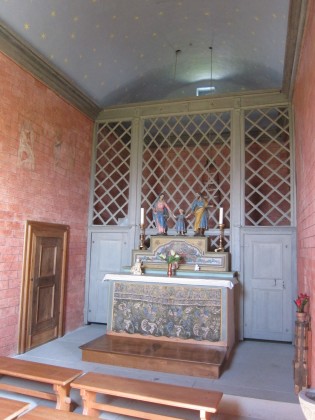
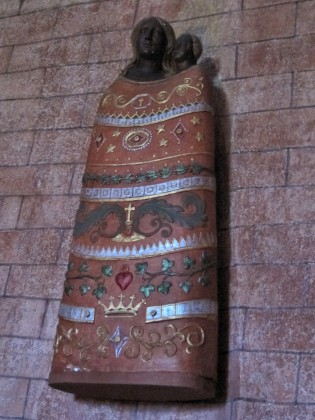
The altar and behind it in the "kitchen" hangs a copy of the Loreto Madonna of Biberegg.

After crossing the plain including the railroad, we come to Siebnen.

The striking parish church of the Sacred Heart (Herz Jesu).
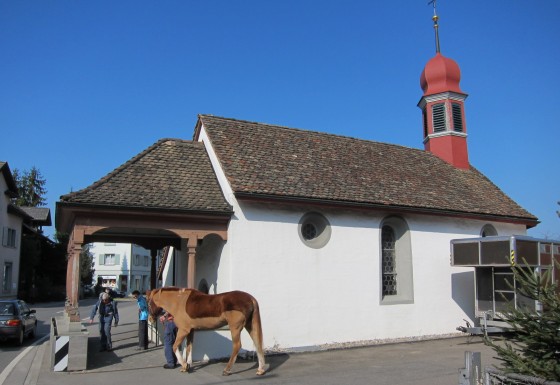
The St. Nicklaus Chapel opposite the parish church houses unique art treasures. Unfortunately, it is closed most of the time.
The link Nicklaus chapel is worth a visit!

On the way from Siebnen to Galgenen - here near Chrüzstatt - we observe paragliders.
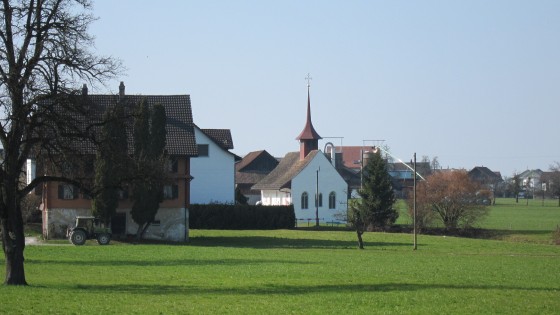
The Jost Chapel of Galgenen. For details see the link "Jostkapelle".






